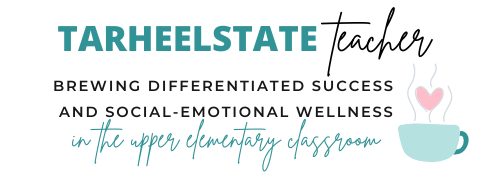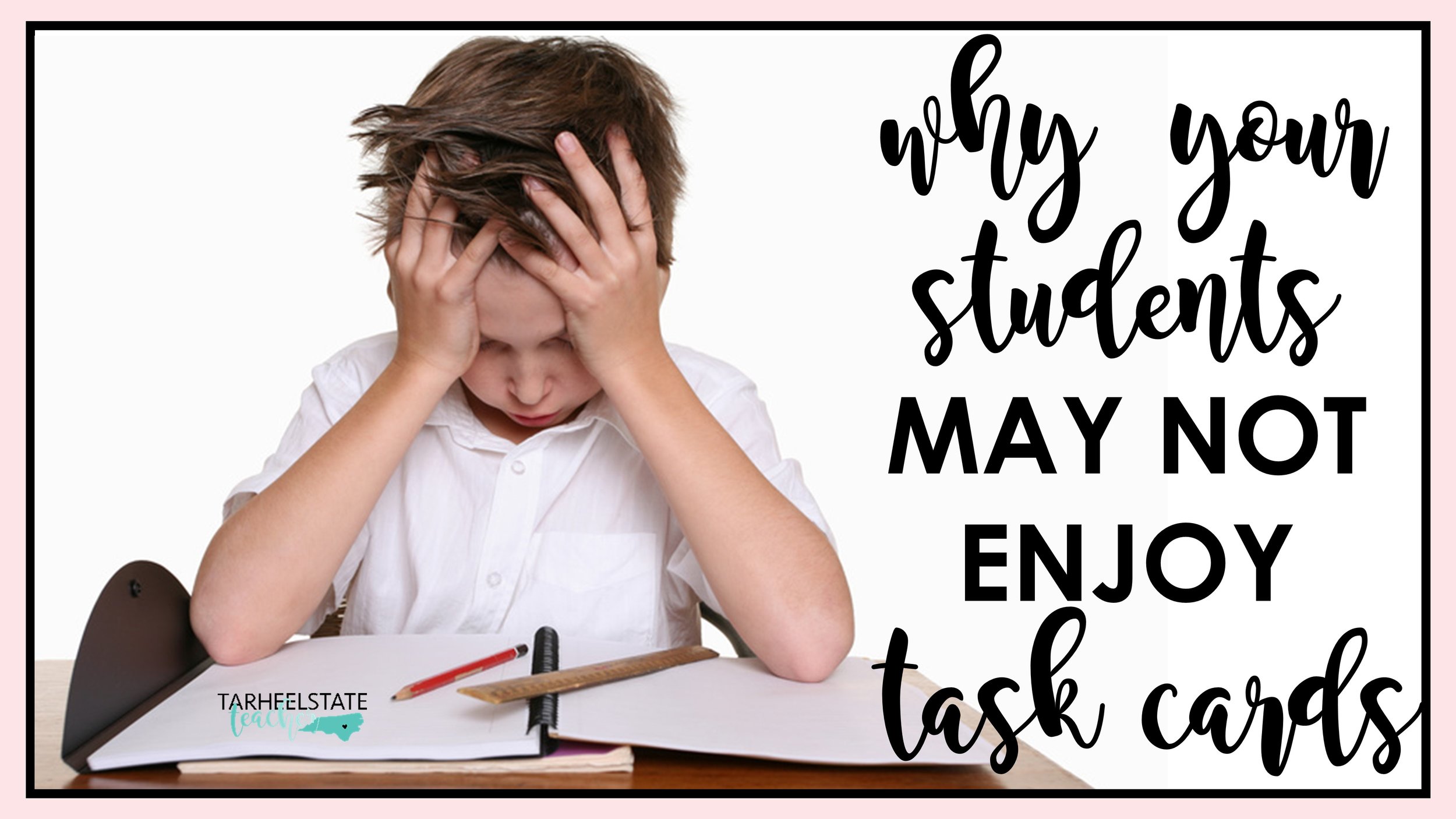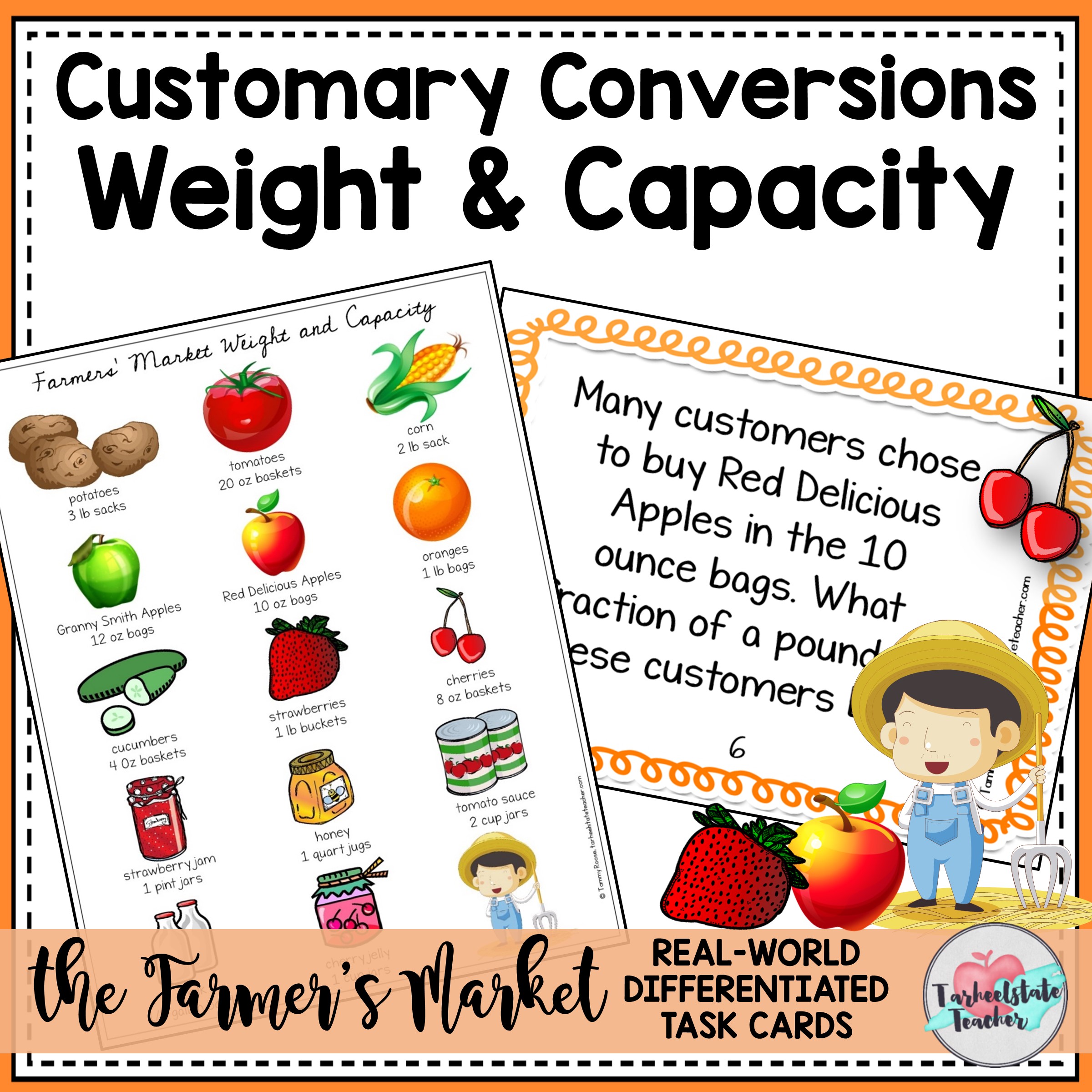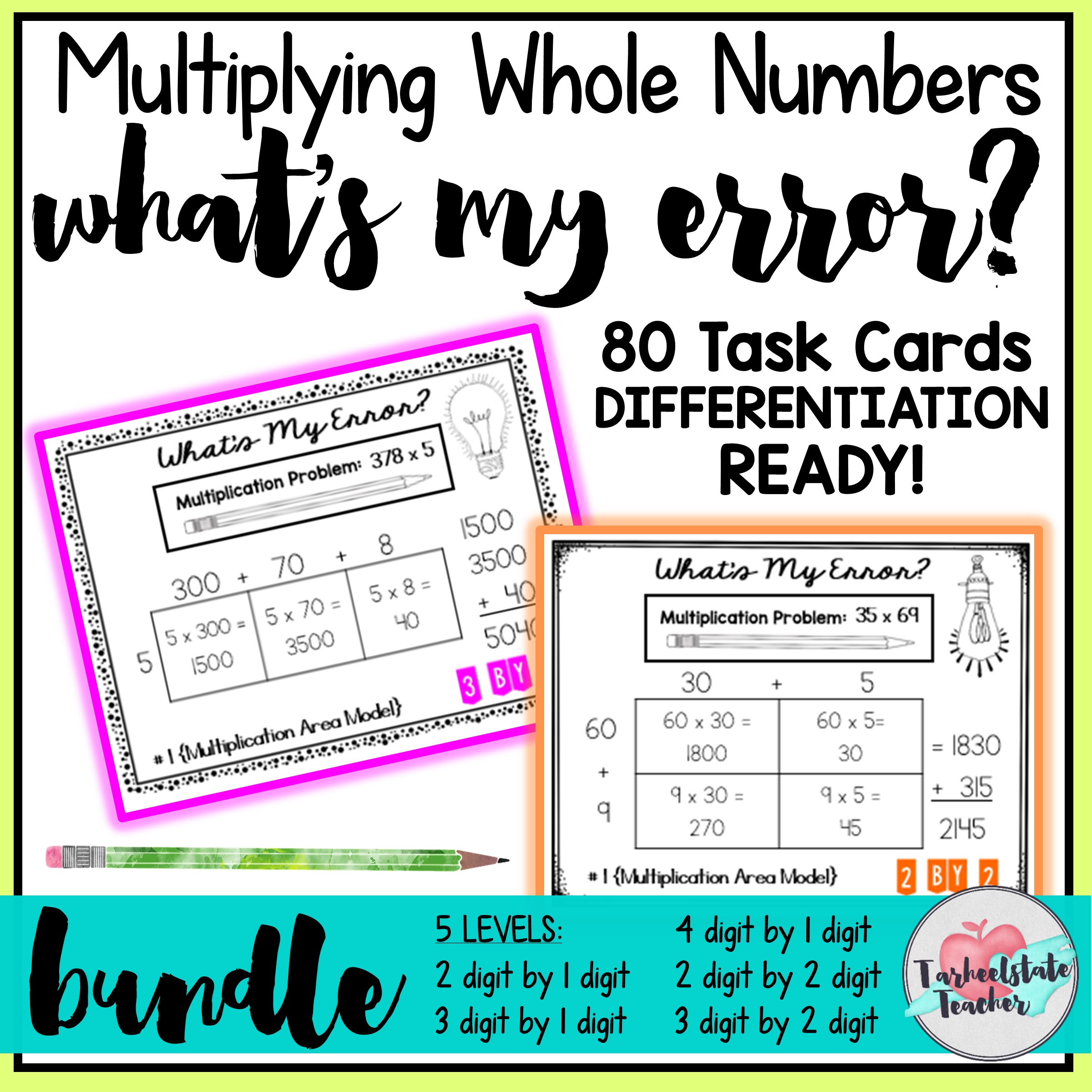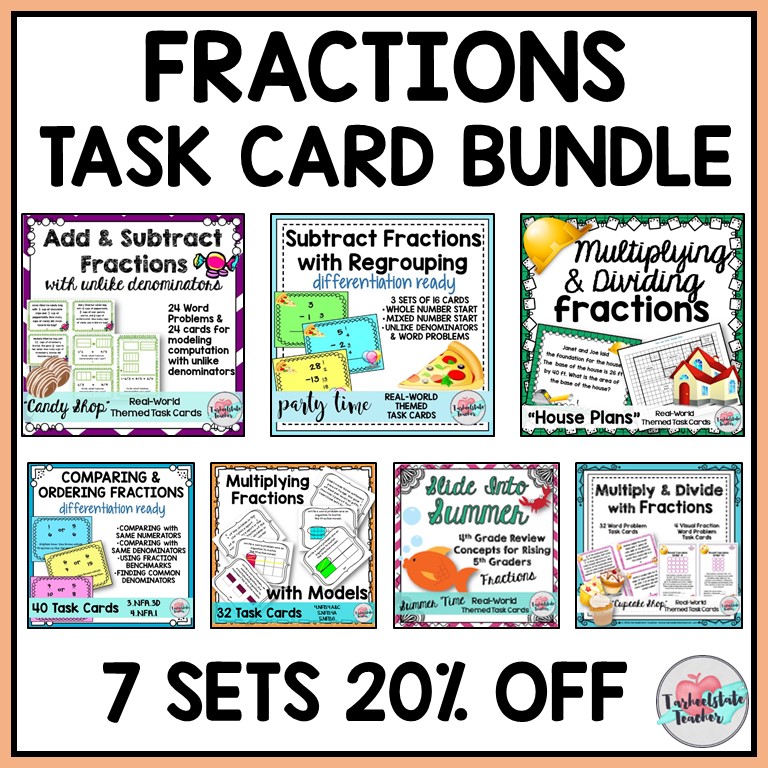Why Your Students May NOT Like Task Cards
I once had a teacher friend say to me, "My students don't like task cards." After picking my jaw up off the floor and wracking my brain for a single student that didn't respond positively to task cards in my past 5 years of using them, I realized that this response may have come from differences in the way task cards are implemented and used in the classroom.
So, today, I'd like to describe how I use task cards in my math class. I'd love to know if I share anything with you here that is a new way of looking at task cards.
HOW I PREP TASK CARDS
I know many teachers use task cards for math stations or centers, but I almost always launch a set of task cards by using them in whole group first. If the task card set has been designed with levels of difficulty or in sets of tasks that increase in challenge, I print the task cards on different colors of card stock. I print the answer keys and write the color the task cards were printed on at the top of each set of answers. (So, if I printed the task cards on lovely neon green cardstock, I write GREEN on the top of the answer key). I place each answer key in a plastic sheet protector to keep it clean.
WORK TIME: Whole Group using the same set of cards
Now, depending on where my students are in their learning of the skills and objectives, I may have 2-3 sets of task cards in use OR I may be using one set of task cards with the whole group.
If I'm using one set of task cards for whole group, I place cards all around the room, 1-2 per desk and then put a few at the carpet, the kidney table, on top of reachable bookshelves and sometimes in the whiteboard tray. (If you think you have to tape all of your task cards up around the room and in the hallway like a scavenger hunt to get students to enjoy them--you don't! Save yourself some prep time and just train students in how to spread them around the room.)
After task cards are spread out, students move around the room as they wish, solving card after card. I either stand at my bookshelf, grab a student desk where I can easily monitor everyone, or sit at my back table to help students who ask for it and check their answer sheets. I expect students to check in with me throughout their task card work and sometimes have an extra adult in the room who also has an answer key (ummmm #lifesaver #thankyouUareAWESOME!) I ask students who are struggling to come check in with me after every problem solved (or we just grab a seat next to each other with them working while students come to me to get checked).
It works like a well-oiled machine, I promise.
WORK TIME: Multiple Sets of Cards for Differentiation
If I am using multiple sets of task cards {because my students have shown that they need me to differentiate their practice, see these subtracting fractions task cards for an example}, I create a chart to display on the smartboard showing each student where they will be working. I can have students working on three different task card sets at the front of the room, at my carpet, and at a table or at their own desks. {One year, I figured out how to get TWO CARPETS into my classroom. It was glorious!} Now that I've got students in 2-3 differentiated groups, I bet you can guess who I'll sit down by and who I'll spend most of my time with. My higher kids will come to me to ask questions about what they don't understand. Often, when I've gone over a tough question with one student, I then make them the go-to person for that question. {works like a charm and ensures that I didn't do the work for them without them truly understanding}.
Note: I also get into times where I have 2-3 sets of task cards going because some students have finished a set of task cards and were ready to move on to the next level. {I always have the next-harder set of task cards prepped and ready to go for occasions like this!}
CLEAN UP
When clean up time comes, my students know to search the room for task cards. Usually, a few students take responsibility for collecting task cards and a few students take the answer sheets. (I make it clear that I do NOT want materials brought to me). Either myself or a few students organize all of the materials at our small group table. The task cards go in a plastic bag. The student answer sheets, task card answer keys, and the bag of task cards get clipped together for easy clean up.
Now that you know how I implement task cards, let's get back to why your students may not enjoy a task card routine... here are some reasons I thought of:

1) You put your task cards in a center before introducing the cards or the concepts. Some students may feel uncomfortable or unprepared for working on the cards independently--even if you feel you have differentiated your stations.
2) You always expect students to be silent or work completely independent when working on task cards. Task cards are not worksheets! The beauty of task cards is that they can be used to get students on their feet. They may want to socialize from time to time (or they may talk to help one another), but it's not necessary that they are completely silent during task card work.
3) You are not rotating the room and checking their work to give instant feedback (gratification) and encouragement. Maybe you are tied down to a small group or to 1-2 students who need more help. Be sure you take a break from them from time to time and check on the rest of the class. Better yet, set your students who need one on one attention up with a partner that can provide them the support they need so that you will be available to work with everyone. I find INSTANT FEEDBACK is part of the magic of task cards versus worksheets.
4) Your students are unmotivated or stressed because they have to finish all of the task cards before they can do something else. When I implement a set of task cards, I rarely expect students to complete every single problem. Some task card sets have 30-40 questions and some students work more slowly than others. Expect an appropriate amount of questions to be answered, but don't make students feel punished just because a task card creator gave you more cards to work with than your students can complete in 1-2 sittings.
5) Your students see the cards as busy work because they are not challenging enough for their learning needs. Once a student has shown mastery of the concepts, I often go ahead and move them on to more challenging task cards or math projects. No need to keep working on something that you already know how to do well.
If you have felt unsuccessful using task cards in the past, I encourage you to think about why they didn't feel successful. What wasn't working? (I'd really love to hear about it in the comments.) Make sure that you are not using task cards like "glorified worksheets" (click to read that post to learn more about why I think task cards are magical if you haven't already!) and give it another shot!
Need some task cards? I'm here to help because I am madly in love with task cards as a differentiation and teaching strategy!
Rounding Tens, Hundreds, Thousands (Around the USA themed)
Place Value: Comparing Values in Numbers (Around the USA themed)
Multiplying with the Area/Array Model (Error Analysis)
Dividing Whole Numbers with the Area Model (1 digit and 2 digit divisors)
Multiplication and Division of Whole Numbers Multistep Problems
Adding and Subtracting Fractions Candy Shop Theme (unlike denominators)
Subtracting Fractions with Regrouping Party Time Theme (like and unlike denominators)
Multiplying Fractions Task Cards (with representational models and word problems)
Multiply and Divide Fractions House Plans Theme (incorporates area)
Customary Measurement at the Farmer's Market (converting gallons, quarts, pints, cups)
Multiplying and Dividing Decimals House Plans Theme (incorporates area)
4th Grade Review for End of Year or Beginning of Year 5th (summer slide theme)
Challenging Multistep Word Problems for 5th Graders (Regions of USA themed)
